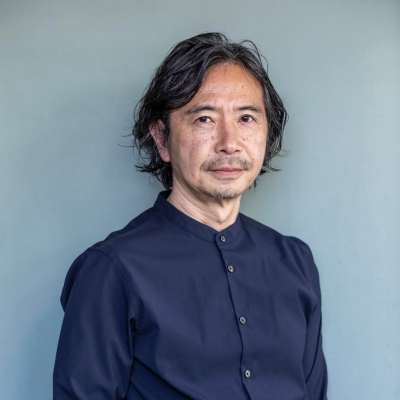
COLUMN
Search by keyword
- All
- Ryotei & Restaurants
- Lodging/Hotels
- Producers
- Technology
- DX (Digital) & SNS
- City Planning
- Utilization
- Gastronomy and Culinary
- Japanese Nature
- Japanese history and traditional culture
- Japanese Food Culture
- Agriculture
- Fisheries
- SDGs
- Local production for local consumption
- Foreigner Activation
- Experience
- Overseas Expansion
- Fermentation
- Public-private partnerships and collaborations
- Sake
- Community Revitalization
- Spirituality
- Japan of the Sea
- Mountain Japan
VIEW ALL
-
Read more

17 A Rapidly Growing Green Shift in the Food Industry in the Global—Volume 1: Introduction
Based on the motto “Clues and Markets Can Be Found Overseas,” my activities are centered on Lifestyle Researcher, a global network of more than 600 Japanese women who have lived long-term in 100 cities in 70 countries worldwide, and work locally in various fields such as journalism and research. I hope to have an opportunity to tell you later why we focus on Japanese and why we specialize in women. I have been working in overseas businesses for nearly 20 years using this unique framework, and my utmost priorities have been the local consumer perspective and local living environment and conditions. Based on the title “A Green Shift in the Food Industry,” in this first article I will introduce several trends I have discovered in overseas countries by hearing from local people, feeling local signs and trends, and sensing changes in society and values. I would also like to examine my hypothesis on how this global green shift in the food industry can be a major driving force for Japanese washoku culture, gastronomy, and overseas strategies to attract inbound tourism. To help me with my work, I enlisted the help of Lifestyle Researchers from seven different countries: the UK, France, Denmark, the US, Mexico, South Africa, and Singapore. Here I will outline what sort of unique guidelines and visions that governments and public organizations in each country have for promoting this green shift. One major movement is the Green Industrial Revolution announced by the UK government in autumn of 2021. The Industrial Revolution began in the UK in the 19th century and sought to create the convenient and efficient society we live in today. The idea behind the Green Industrial Revolution is to reset the current carbon-based society and achieve a green shift to a zero-carbon society. In line with the above announcement of the Green Industrial Revolution, the UK Department for Environment, Food & Rural Affairs examined a set of guidelines to promote zero carbonization while maintaining food security. As a result, the department launched the Farming Innovation Programme to introduce technologies to promote low-carbon agriculture. At COP26 in Scotland in 2021, the UK Food and Drink Federation —made up of more than 1,000 food-related companies—announced a statement to make the domestic food industry a zero-carbon society. The food served at COP26 was made with local ingredients and beverages were provided in recyclable cups. In these and other ways, […]
-
Read more

15 A “Delicious” Economy to Change the Future of Society—Living in a Country with the Best Food in the World
Japan can perhaps be called the country with the best food in the world. In a global survey asking which countries people most want to visit after the pandemic, Japan was number one among people living in Asia and number two among those in Europe and the US. In both cases, Japan was at the top end of the list. Moreover, the number one reason people wish to visit Japan is said to be for its food. As this suggests, while many foreign visitors to Japan come in search of delicious food, Japan in fact has the highest number of Michelin-starred restaurants in the world. The total number of stars and three-star restaurants in Tokyo far exceeds that of Paris, which can be called the home of Michelin star framework. A characteristic of the restaurant industry in Japan is that many Japanese chefs have honed their skills not only in Japanese cuisine, but also in French, Italian, and other foreign cuisines, and have earned Michelin stars. Further, outside of Michelin stars, there are countless numbers of Japanese chefs who have won first place in international cooking competitions such as the Pasta World Championships and the World Pizza Championships. We can therefore say that Japan is the country that evolves tastes of other countries in more delicious way. Elsewhere, Japan has an abundance of delicious, seasonal foods from both the sea and the mountains. Thanks to an excellent supply chain, customers can consume these ingredients while they are still fresh. Meanwhile, advanced fermentation techniques developed in the preserved food culture have broadened the range of umami flavors. There are many positive aspects of Japanese food, such as the diversity of food culture, which varies from region to region, including traditional and local cuisine, and the high level of “seasoning technology” in factories producing seasonings and processed foods. Alongside its “deliciousness” technology, Japanese food is also highly regarded worldwide for its health benefits and for its lower environmental impact compared to Western food. In 2005, the number of Japanese restaurants overseas stood at approximately 25,000. In 2010 this number doubled to 50,000, and expanded to 150,000 in 2020. With such wonderful characteristics, it is essential that we seriously address how to maintain and develop our globally respected food culture. Doing so can help Japanese food culture maintain its dominance over the centuries. In a future of exploding world population, food will become […]
-
Read more

10 The Course of Action for Plant-based Gastronomy—Our World in 2050
The outbreak of the COVID-19 pandemic in 2020 has led to drastic changes in today’s lifestyles and habits, and there is a sense throughout society that we have entered a new phase. At the same time, we are also beginning to feel the impacts of worldwide social issues such as global warming in our daily lives. For example, in addition to torrential downpours becoming the norm in recent years, every year we are seeing typhoons of record-breaking scale. We are also experiencing major changes elsewhere, with declining fish catches, seasonal changes, and poor harvests of previously stable vegetables and other crops. As civilization has advanced and the quality of our lifestyles has improved, unknowingly, we have also been causing huge damage to the global environment. Further, with a global population explosion on the horizon, some say that we will require two earths if we are to continue with our current way of life. Against this backdrop, countries across the world are coming up with diverse ideas to tackle these environmental issues, engaging in various initiatives to rebuild the planet. In gastronomy, eating is the common denominator among people worldwide that is essential to sustaining life. I believe that food can provide one solution to these environmental issues, and have realized the importance of promoting and developing environmentally friendly lifestyles through food. A plant-based diet is one solution that can have an effective outcome for the global environment. This plant-based diet has been closely related to the Japanese diet since ancient times. One example is shojin ryori, a vegetable-based Buddhist cuisine, which is a key part of Japanese food culture. Shojin ryori was first introduced to Japan in the 13th century. A lack of logistics at the time meant that individuals would source local, seasonal ingredients themselves, only taking the necessary amount to ensure harmony with nature and show their appreciation for nature’s blessings. This was a self-sufficient, sustainable way of life. This ancient approach can help us rethink the gluttony in modern society. My hope is to promote lifestyles that can have a positive effect on both health and the environment. With the knowledge that I can help people improve the environment in a stress-free manner through dining, whether at home or restaurants, I have therefore taken action. One initiative that I have developed for society is the 1,000 Vegan Project, through which we aimed to switch from regular meals […]
-
Read more

9 Education & Geo-gastronomy
“Let’s think about ways to minimize food mileage,” “If we can reduce meat consumption by promoting vegan foods, we can cut CO2 emissions,” and “I wonder if there are any local foods that have gone unnoticed…”—These are some of the remarks from a class of sixth grade students at the Keio Yochisha Elementary School. The classroom discussion among these sixth grade students is gaining momentum as they seek to widely communicate their ideas to society. In November 2021, one class from the sixth grade at Keio Yochisha Elementary School participated in the Islander Summit Ishigaki, giving an online presentation on the theme “Food of the Future.” For me, developing ambitions and ideas to transform society for the better is an important part of education. As such, using my position as a teacher, I have sought to shine a light on the relationship between the environment and food—something which children will be familiar with—and set up the following activities on the “Food of the Future” theme. October – A lesson from Kenichi Watanabe, representative at Geo Gastronomy, introducing a whole range of food-related issues and advanced case studies. – An online lecture and interaction with Tomoko Kitamura Nielsen, environmental director on the Danish island Lolland, talking about food-related environmental awareness in Denmark and advanced case studies. – An online lecture and interaction with Hitoshi Sugiura, winner of the gold prize at the World Vegan Cooking Contest, about the environmental impact of food and vegan cuisine. – Use of official World Food Forum videos as teaching materials to further understanding of the diversity, cyclicity, and sustainability of food. November – Presentation at the Islander Summit and comments from experts. – Online lecture and interaction with Prof. Seiko Shirasaka from the Graduate School of System Design and Management at Keio University about advanced space utilization and environmental issues from a space perspective. Something that every child around the world does every day is sit down for a meal. Helping children understand the relationship between food and the environment can help them realize the close link between themselves and society’s problems. In the lesson from Kenichi Watanabe, children were surprised to learn about the katemono (edible wild plants) recipes that were made to overcome hunger in the Yonezawa domain during the Edo period. Some children suggested that if we had a modern-day version of these katemono recipes, we might be able to help countries […]
-
Read more

7 Breaking Free of Our Reputation as a Major Generator of Food Loss and Waste and Communicating Our Achievements to the World
According to estimates from the Ministry of Agriculture, Forestry and Fisheries and the Ministry of the Environment, in fiscal 2019,Japan was responsible for around 5.7 million tons of edible food loss and waste. This placed Japan as the sixth worst country in the world and the overall worst in Asia for the volume of food loss and waste. Despite this shocking figure, since long ago, embedded in Japanese society has been the term mottainai, a thorough expression of regret that something has been put to waste. Moreover, long before the SDGs came to the fore, Japanese people have expressed their thanks for a meal with the phrase itadakimasu and, as a sign of respect for the deity of rice, treated the completion of a meal as a virtue. Meanwhile, Japan is famous for its manufacturing, and its outstanding manufacturing companies have for a long time created highly durable, long-lasting products, building sustainable business models in an array of fields that are far-removed from other mass-production, mass-consumption models. Where, then, does this contradiction between Japan’s traditional dislike of waste and its current food loss and waste problem come from? This question was the very reason I set up the Food Loss Bank in 2020. Ultimately, I came to the conclusion that Japan’s peaceful state was part of the problem. Japanese people tend not to take ownership of a problem, instead relying on the idea that someone else will take care of it. This doesn’t only apply to individuals. In fact, some corporations have been criticized for “greenwashing”—that is, engaging in environmental initiatives as a mere formality for the SDGs, but not really working to minimize environmental impact. Moreover, there are also some fruitless claims that climate change does not exist. It is also often the case that companies or individuals feel like they have taken the necessary action after one-off donations or single SDGs events, tending to forget about the fundamental issue itself. In the end, perhaps the most important thing is how many people can take ownership of the problem and generate action. Some think that it is the duty of major companies to take the initiative and deal with the food loss and waste problem. Of course, companies in the food and drink industry, the food manufacturing industry, and the logistics industry, for example, do have a huge responsibility. However, the truth is that around half of the abovementioned […]
-
Read more

1 The Future of the UNWTO’s Gastronomy Tourism Initiatives
According to a survey by the World Tourism Organization (UNWTO), in recent years, the number of tourists who prioritize experiencing the regional lifestyles and cultures of their destination by enjoying the local cuisine is increasing at around the same rate as those who visit tourist hotspots. These tourists have a strong desire for authenticity and tend to consume more than the average tourists. Gastronomy tourism is defined as “A form of tourism that aims to experience the local culinary culture and to enjoy food nurtured by the ingredients, culture, customs, traditions and history created by the local climate.” In today’s post-COVID-19 society, overtourism and other tourism issues prior to the pandemic have made initiatives for the SDGs more important, while awareness of the importance of sustainable tourism—in terms of the economy, society, culture and environment—is gradually increasing. Gastronomy tourism is closely linked to the local natural environment, agriculture and culture. Further, gastronomy tourism, which anyone can participate and which contribute to participants’ health and happiness, can be considered an effective way for achieving sustainable tourism. Moreover, the origins of many types of cuisine can be found in the local history and culture. Food is therefore an ideal contents to highlight a region’s characteristics, and can be one of the great pleasures of travel. In a survey conducted by the Japan Tourism Agency, the primary attraction for foreign tourists visiting Japan was “eating Japanese food”, while in sixth place was “drinking Japanese sake”. As a result of the above, local governments around Japan are proactively engaging in gastronomy tourism initiatives to achieve regionaldevelopment. The UNWTO lists the following five reasons for the focus on gastronomy tourism: (1) It is an effective way for regions to differentiate themselves; (2) it can provide visitors new values and experiences; (3) it can be initiated even in regions with few tourism resources; (4) it is conducive to tell regional stories; and (5) it promotes tourists to revisit. Below are three initiatives led by the UNWTO for gastronomy tourism. The first is a report that the UNWTO published in 2019 called Gastronomy Tourism – The Case of Japan. This report features 18 excellent examples of gastronomy tourism activities in Japan. The report follows a survey of Japan’s 1,741 municipalities, of which 584 responded. It shows that gastronomy tourism activities in Japan are more comprehensively focused on sustainable regional development and collaboration with agriculture than tourism promotion […]

